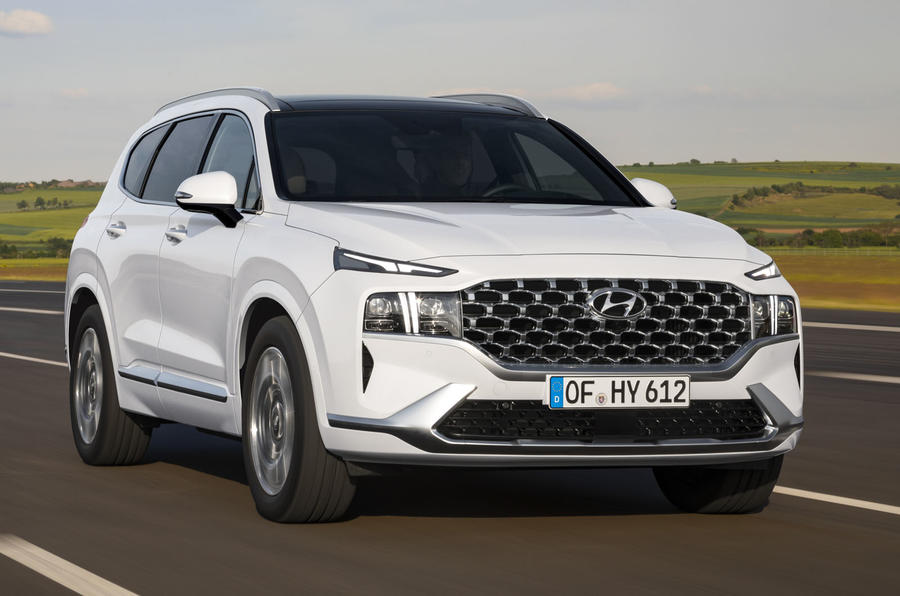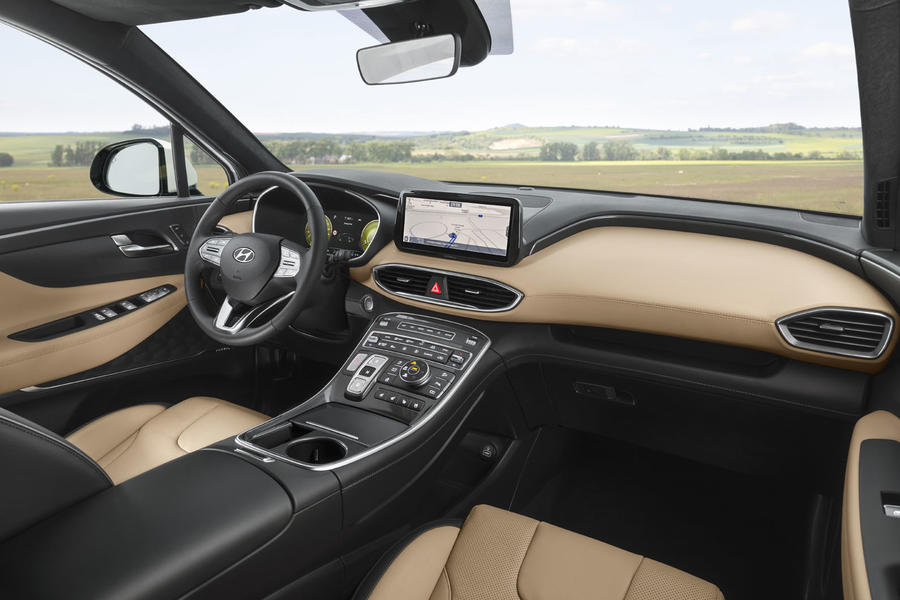Hyundai has priced up two new hybrid versions of its significantly updated Hyundai Santa Fe flagship SUV, which brings a bold styling overhaul, fresh hybrid powertrains and an all-new platform in a bid to enhance the Hyundai's premium appeal.
The seven-seater is the first model in Hyundai’s European line-up to move across to the ‘third-generation’ architecture, which already underpins the US-market Sonata saloon. The brand claims the new platform will offer “improved performance, efficiency and safety”.
The 2021 Santa Fe is available with hybrid and plug-in hybrid (PHEV) powertrains for the first time. The Hyundai Santa Fe Hybrid, priced from £40,205, is expected to be the most popular variant of the new model. It mates Hyundai's new Smartstream 1.6-litre turbocharged four-cylinder petrol engine with a 59bhp electric motor and a 1.49kW lithium ion battery to produce 227bhp and 258lb ft. Both front- and four-wheel-drive configurations are available, emitting between 145 and 168g/km of CO2.
The four-wheel-drive-only Hyundai Santa Fe PHEV option, already deployed in the Santa Fe's recently refreshed Kia Sorento sibling, is priced from £45,715. It pairs the same 1.6-litre engine with a 90bhp electric motor for a combined output of 261bhp and 258lb ft. An13.8kWh battery pack offers a WLTP-certified EV range of 36 miles per charge, and combined CO2 emissions stand at 37g/km.
Hyundai claims neither hybrid option loses out on passenger or load space, with the battery packs for each located under the front seats.
The new additions to the range are available in a choice of two trims: Premium and Ultimate. The former is equipped as standard with 17in alloy wheels, electric heated mirrors, LED lights all round, heated front and rear seats and dual-zone climate control, while the top-rung car gains extras including a 360deg parking camera, additional driver safety aids, remote park assist and a 12.3in digital gauge cluster with full head-up display.
The new Smartstream petrol engine uses Hyundai's newly developed Continuously Variable Valve Duration (CVVD) technology, which is said to improve performance by 4%, fuel efficiency by 5% and emissions by 12% over the outgoing 1.6-litre motor by varying how long the inlet and outlet valves remain open according to the driving situation. Also featured is a low-pressure exhaust gas recirculation function, which sends burnt gas back to the combustion chamber to cool the engine and reduce CO2 emissions.
Headline features include a new ventilation system that improves air movement through the engine bay, allowing heat to dissipate and improving the Santa Fe’s stability. Heavy components are also located lower in the chassis for a lower centre of gravity.
The SUV’s dynamic performance is also claimed to have been improved by relocating the steering arms, while reinforced sound- and vibration-absorption material throughout the chassis aids rolling refinement.
















































Join the debate
Add your comment
You know Hyundai means
Don’t dismiss
I think anyone who still dismisses Kia is living in the past. Whilst it is difficult to equate them as a premium brand when a decade or so ago they were selling cheap cars on the scrappage scheme there is no hiding the great EVs Kia have introduced and the recent accolade of World Car of the Year for the Terraride - the Sorento's bigger brother. For quality and value - to say nothing of the 7 year warranty - Kia's are a serious proposition.
Hyunda iSanta Fe
It' sure looks good and no doubt that Hyundai certainly know their stuff but please could the grille be toned down a bit for Europe